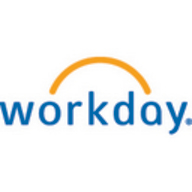

Workday Business Process Framework and Red Hat Fuse both compete in the business process and integration platform category, focusing on enhancing business operations. Workday seems to have an upper hand in HR and financial customization, while Red Hat Fuse offers superior flexibility for diverse integration needs.
Features: Workday Business Process Framework includes advanced workflow management, strong real-time analytics capabilities, and seamless integration with Workday's suite. Red Hat Fuse offers a lightweight, cloud-based integration platform, comprehensive connectivity options, and an open-source architecture.
Ease of Deployment and Customer Service: Workday provides straightforward deployment with extensive customer support, focusing on HR and financial process optimization. Its deployment is seamless for existing Workday users. Red Hat Fuse, with its container-based model, requires deeper technical setup knowledge but offers greater flexibility in integrating multiple systems. Both have strong support mechanisms, though Red Hat Fuse demands more initial technical investment.
Pricing and ROI: Workday Business Process Framework typically has higher setup costs but offers significant ROI through optimized HR and finance operations over time. Red Hat Fuse offers a competitive cost structure with high ROI potential due to its versatile integration capabilities and open-source model. Despite differing initial costs, Red Hat Fuse appeals to organizations seeking broader integration solutions with moderate investment.
| Product | Market Share (%) |
|---|---|
| Red Hat Fuse | 7.0% |
| Workday Business Process Framework | 0.9% |
| Other | 92.1% |


| Company Size | Count |
|---|---|
| Small Business | 3 |
| Midsize Enterprise | 9 |
| Large Enterprise | 12 |
Red Hat JBoss Fuse is a lightweight, flexible integration platform that enables rapid integration across the extended enterprise - on-premise or in the cloud. JBoss Fuse includes modular integration capabilities, an enterprise service bus (ESB), to unlock information.
We monitor all Enterprise Service Bus (ESB) reviews to prevent fraudulent reviews and keep review quality high. We do not post reviews by company employees or direct competitors. We validate each review for authenticity via cross-reference with LinkedIn, and personal follow-up with the reviewer when necessary.